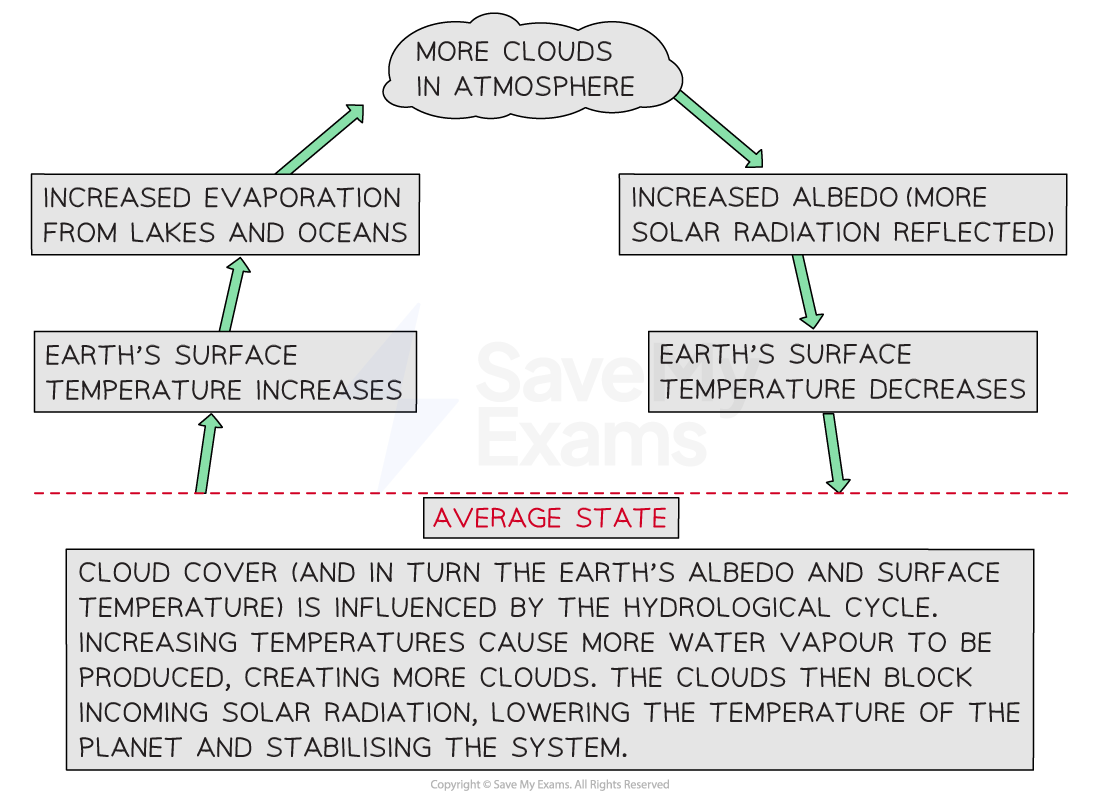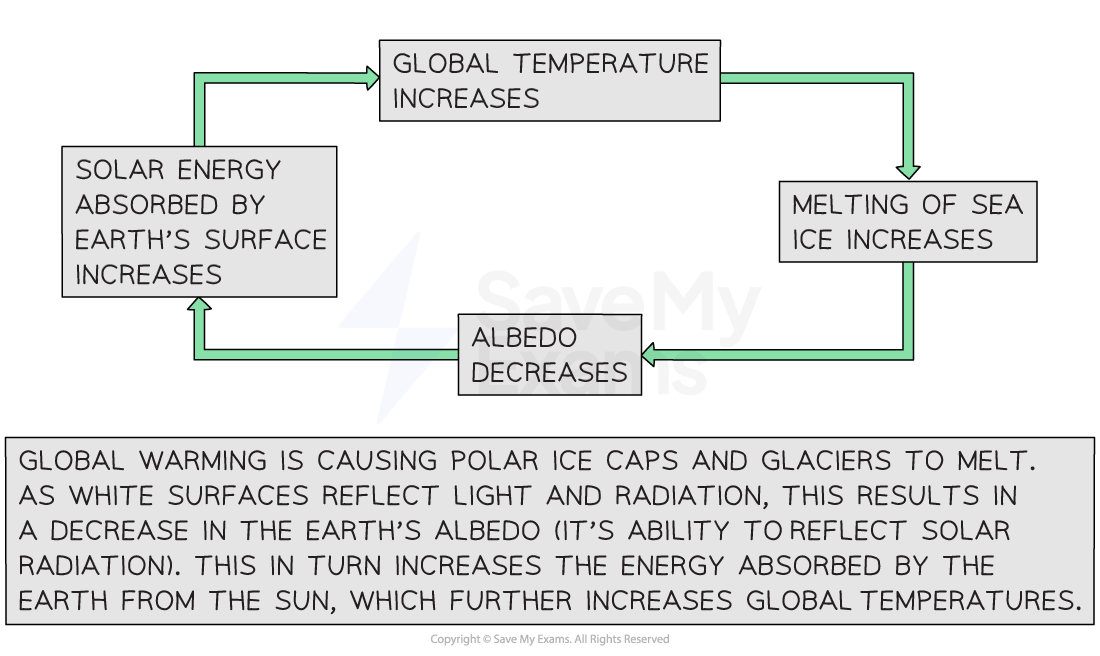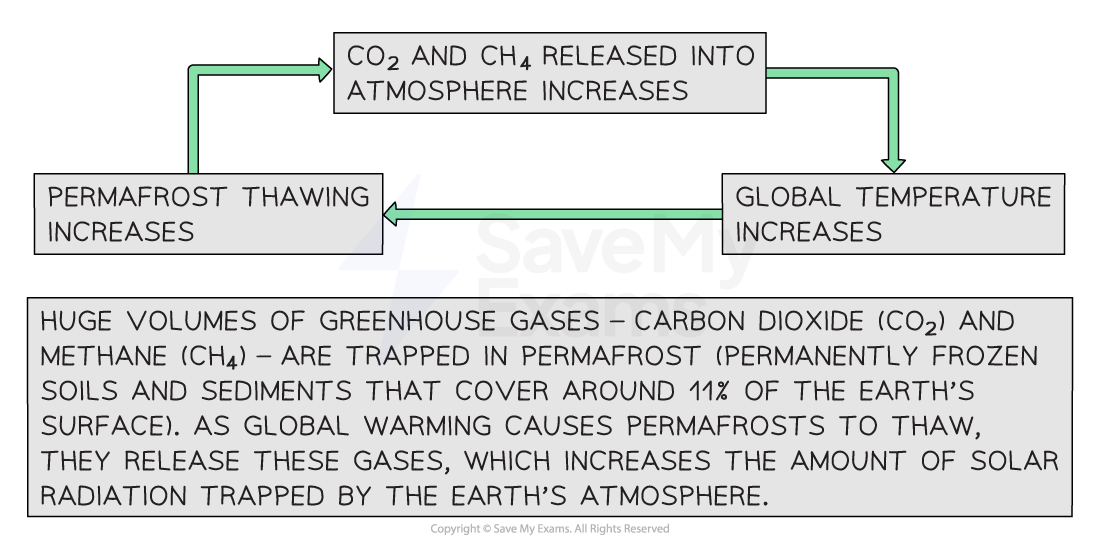Syllabus Edition
First teaching 2015
Last exams 2025
Positive & Negative Feedback (DP IB Environmental Systems & Societies (ESS)) : Revision Note
Positive & Negative Feedback
Most systems involve feedback loops
These feedback mechanisms are what cause systems to react in response to disturbances
Feedback loops allow systems to self-regulate

Changes to the processes in a system (disturbances) lead to changes in the system's outputs, which in turn affect the inputs
There are two types of feedback loops:
Negative feedback
Positive feedback
Negative Feedback
Negative feedback is any mechanism in a system that counteracts a change away from the equilibrium
Negative feedback loops occur when the output of a process within a system inhibits or reverses that same process, in a way that brings the system back towards the average state
In this way, negative feedback is stabilising - it counteracts deviation from the equilibrium
Negative feedback loops stabilise systems


Examples of negative feedback include predator-prey relationships and parts of the hydrological cycle
Positive Feedback
Positive feedback is any mechanism in a system that leads to additional and increased change away from the equilibrium
Positive feedback loops occur when the output of a process within a system feeds back into the system, in a way that moves the system increasingly away from the average state
In this way, positive feedback is destabilising - it amplifies deviation from the equilibrium and drives systems towards a tipping point where the state of the system suddenly shifts to a new equilibrium
Positive feedback loops destabilise systems


Examples of positive feedback include melting of the ice caps and thawing of permafrost

You've read 0 of your 5 free revision notes this week
Sign up now. It’s free!
Did this page help you?

